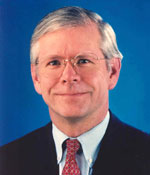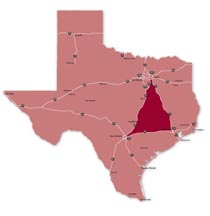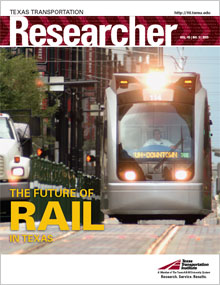
Sixty years and more than $1.8 trillion have given our country the world’s most advanced highway and aviation systems. With more paved lane-miles and bridges than any other state, and airports rivaling the best in the world, Texas’ unprecedented mobility today fosters more economic firepower than that of most states and many countries. But federal programs that financed transport networks during the last half century have faltered. Although promising, rumors of a federal reauthorization hold little hope for the wholesale legislative response needed to reposition U.S. transportation programs to meet 21st century challenges. And in Texas, those challenges are arriving in droves.
Texas’ population of 23 million will grow at twice the national rate between now and 2030, to nearly 40 million. Over 75 percent live in the Texas Triangle *#8212; bounded by I-35, I-45 and I-10 — with 50 percent straddling the I-35 corridor alone. By 2030, 30 million Texans will live in the Triangle, more than in all of Texas today. One outcome is certain: urban and intercity congestion in the Triangle is poised to skyrocket.
 To be sure, rural Texas faces its own transportation challenges. But Triangle commerce is the heart of the entire state economy, present and future, and relies heavily on mobility for continued expansion. For that reason, congestion in the Triangle represents Texas’ foremost transportation challenge.
To be sure, rural Texas faces its own transportation challenges. But Triangle commerce is the heart of the entire state economy, present and future, and relies heavily on mobility for continued expansion. For that reason, congestion in the Triangle represents Texas’ foremost transportation challenge.
As Texas enters its distinctly urban future, an aggressive, coordinated mobility strategy for the Triangle as a whole becomes indispensable. And these days, any effective strategy must utilize all available financial sources and tools, individually and in combination. Highways and aviation will remain the heart of our transportation solutions. But no region in the U.S. appears better suited for high-speed rail than the Triangle (distances, densities, available right-of-way, environmental); and since it would take nearly two decades to evaluate, finance and develop high-speed rail, the time for first steps is now.
In short, for Texas to maintain its economic muscle for the 21st century, transportation leadership will have to depart from more politically expedient patterns of statewide resource allocation, concentrating like never before on urban and intercity mobility in the Triangle.
True, great urban centers sometimes thrive despite congestion. But too-rapid or uncontrolled a decline in Triangle mobility will create competitive options for businesses to grow elsewhere — and most other states have come to consider Texas their “elsewhere.” Our transportation challenge is to see that Texas holds that high ground.
